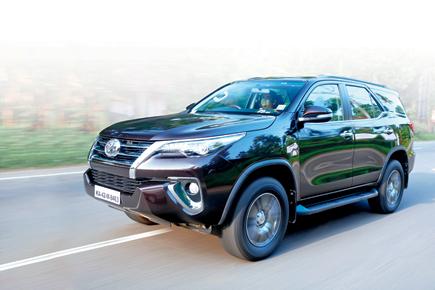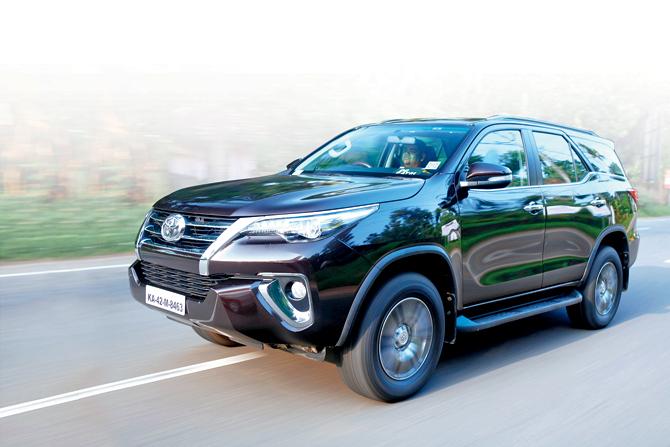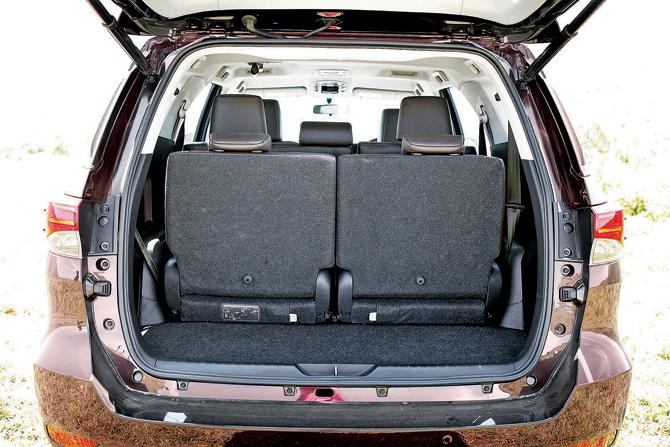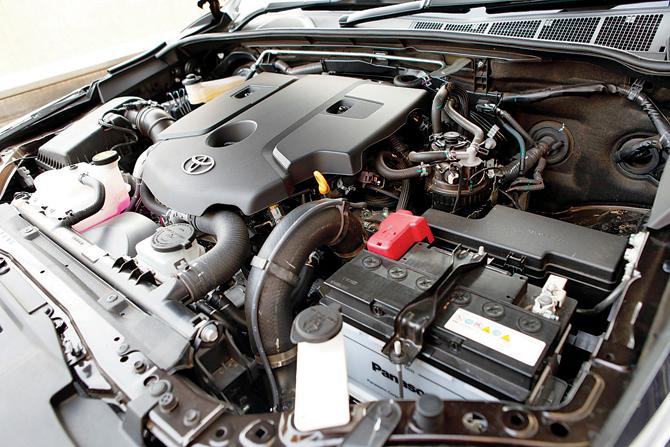The all-new Fortuner finally arrives in India with a contemporary design, without sacrificing on consistency -- a Toyota trademark


ADVERTISEMENT
Plus-size cars somehow always seem to have potential in India. Yet, the aftermath of reliability, service and spares tends to blow up in a manufacturer’s face soon after, especially if everything was turned and tuned just as it should have been. That’s where Toyota has got it right. Consistency.
Consistency in performance and the inputs of external factors that directly or indirectly have an impact on performance determines how well a vehicle will do in the market. You can’t have an impeccable product with abysmal after-sales that can’t get it back into an expected — and delivered — shape.
The Fortuner has done for Toyota what many manufacturers can only hope to achieve. It has been a runaway success for Toyota and the new Fortuner hopes to replicate and build on that success with a more contemporary design that still tries its best to exude the same aura of toughness. New Bi-beam LED headlamps with LED daytime light strips, sleek tail lamps with light signatures, and a rising shoulder-line are the key elements of its new style. The interior benefits from an aesthetic finish with dark wood trim and contrast silver accents. A new touchscreen centre display integrates media and navigation and is easy to get used to.

Two-tone interior looks good, and the seats feel good
The Fortuner is available with a choice of manual and automatic transmissions in both petrol and diesel variants. The petrol is rear-wheel-drive only, while the diesel is available in 4x2 (rear-wheel drive) and selectable-4x4 drivelines. The 2.7-litre petrol engine makes 166 PS and 245 Nm. It gets a five-speed manual transmission or a newly developed six-speed automatic.
The diesel engine is the next-generation 1GD 3.0-litre unit with 177 PS. The manual version gets 420 Nm of peak torque, while the automatic gets the full 450 Nm. There are also three drive modes: normal, Eco and Power. ‘Eco’ shifts early and delays throttle response slightly to improve fuel economy. ‘Power’ shifts later, to keep the motor on the boil, and increases throttle response. The manual also gets an ‘iMT’ intelligent mode, which rev-matches the ratios, thereby improving shift quality and time.
Among the big additions are all four disc brakes with ABS, EBD and Brake Assist. Braking was one of the biggest woes on the old car and Toyota seems to have aptly addressed that. Safety-wise, there isn’t anything that’s really spared. Seven airbags are standard, as is the active traction control. Automatic variants also get vehicle stability control (VSC) and
Hill-hold Assist.

200-litre boot volume can expand all the way to 1080 litres. pics/Sanjay Raikar
The three-row seating adds to practicality, as does the easy-access function to the third row. Individual folding seats and a sliding and reclining second row are appreciated bits as well. The power tailgate with memory is a nice touch.
Get in and the seating is a pleasant surprise. The floor is reasonably low and the seats are immensely comfortable. The layout of the dashboard looks elegant and purposeful. The driver info-display integrates a useful centre display between the two needle-bearers. Keyless go is a nice touch always and having the key with you in your pocket is a good feeling.
On the off-road course, the diesel's torque just above idle is potent enough to keep this two-plus-tonne behemoth rolling forward with conviction. The Fortuner remained sure-footed and barely challenged. The stream turned out to be no more than a couple of inches and it was dismissed without a second thought. The steep slope allowed us to try out the assistance features. They did their jobs flawlessly.

Bi-beam LED lamps light up the road ahead
As we got to the hills, the roll became evident. It is a big and tall car, after all, and while Toyota has a four-link rear suspension to soak up the bumps and undulations, it still has to work hard to keep the giant on the road and pointing in the desired direction.
We hopped into the 4x4 diesel AT with a full 450 Nm of torque. For a big 2.2-tonne SUV, it felt effortless. However, we couldn’t help feeling that the gearbox could have put all that torque to better use.
With torque peaking at 1,600 rpm, there is the potential for lag to surface because, for most part, the oil-burner is turning over at barely 1,200 rpm. Thankfully, there are drive modes, and switching to 'Pwr' helps keep the turbo-four spinning in the power band.

The Fortuner’s diesel motor feels refined and puts out an ample 450 Nm of torque
Of course, the impact on fuel efficiency cannot be overlooked. Stay in ‘Pwr’ and the big 4x4 diesel automatic showed a real-time consumption figure of just about 9.5 km/l. It would deliver much more in ‘Eco’.
The Fortuner feels like the next step from its predecessor. It has moved on from the Hilux platform, they say. It feels just as indestructible and a lot more refined than the model it replaces. Toyota has addressed what they needed to, and this one looks to be every bit the modern iteration.
 Subscribe today by clicking the link and stay updated with the latest news!" Click here!
Subscribe today by clicking the link and stay updated with the latest news!" Click here!






